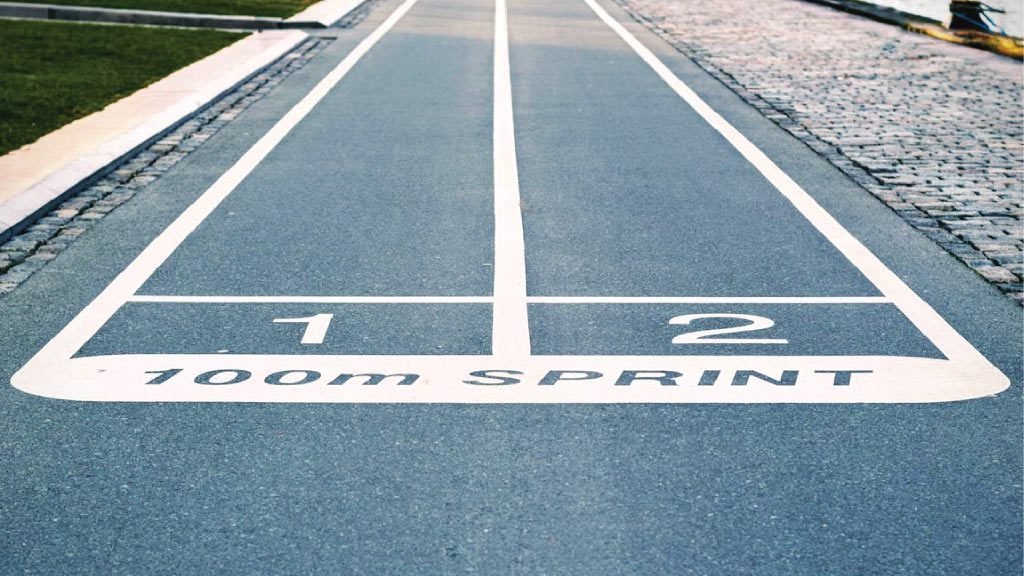Method 1: The Basic Calculation
The most straightforward method to determine how many steps are in a mile involves a simple mathematical equation. On average, a person’s stride length, the distance covered in one step—varies based on factors such as height, leg length, and walking speed. However, a commonly accepted average stride length for adults is around 2.5 feet.
To calculate the number of steps in a mile using this average stride length:
- Determine your stride length: Measure the length of your stride by walking a set distance and counting your steps. Divide the total distance walked by the number of steps taken to get your average stride length.
- Convert feet to miles: Since there are 5,280 feet in a mile, divide the total feet in a mile (5,280) by your average stride length.
- Calculate the number of steps: The result of the previous step will give you the approximate number of steps you need to take to cover one mile.
For example, if your average stride length is 2.5 feet, you would divide 5,280 feet by 2.5 feet to get 2,112 steps in a mile.
Method 2: Pedometer or Fitness Tracker
![]()
With the prevalence of smartphones and wearable fitness devices, many people have access to pedometers or fitness trackers that automatically count their steps. These devices are equipped with sensors that track movement and provide users with real-time data on their physical activity, including the number of steps taken.
To use a pedometer or fitness tracker to determine the number of steps in a mile:
- Calibrate your device: If your device allows for manual input of stride length, you can input your average stride length as discussed in Method 1. Alternatively, many devices automatically calibrate based on your height and other biometric data.
- Take a walk: Simply start walking, and let your device count your steps. Try to maintain a consistent walking pace to get the most accurate measurement.
- Check the results: Once you’ve walked a sufficient distance, check the total number of steps recorded by your pedometer or fitness tracker. This number will give you an estimate of how many steps you take to cover one mile.
Method 3: Online Step Calculators
For those who prefer a quick and convenient solution, there are numerous online step calculators available that can estimate the number of steps in a mile. These calculators typically require you to input your height, gender, and sometimes other variables such as age or walking speed.
To use an online step calculator:
- Find a reliable calculator: Search online for “steps per mile calculator” or a similar query to find a variety of options. Choose a calculator from a reputable source, such as a fitness website or organization.
- Input your information: Follow the prompts on the calculator to input your height, gender, and any other required information. Some calculators may also ask for your age or walking speed to provide a more accurate estimate.
- Review the results: After inputting your information, the calculator will generate an estimate of the number of steps you need to take to cover one mile. Take note of this number for future reference.
Method 4: GPS Tracking Apps
![]()
In the modern era of smartphone technology, GPS tracking apps have become increasingly popular for monitoring various aspects of physical activity, including walking. These apps utilize the GPS capabilities of your smartphone to track your movement and provide detailed information about your walking route, distance covered, and yes, even the number of steps taken.
To use a GPS tracking app to determine the number of steps in a mile:
- Choose a GPS tracking app: There are numerous GPS tracking apps available for both iOS and Android devices, with many offering features specifically tailored to walking and running activities. Some popular options include Strava, MapMyWalk, and Runkeeper.
- Activate the app: Open the GPS tracking app of your choice and select the walking activity option. Allow the app to access your phone’s GPS location services to accurately track your movement.
- Start walking: Begin your walk and let the GPS tracking app record your route and distance covered. Try to maintain a steady pace to ensure accurate tracking.
- Review the results: Once you’ve completed your walk, stop the tracking session in the app and review the summary of your activity. Most GPS tracking apps will display information such as total distance, time elapsed, and number of steps taken during the activity.
By using a GPS tracking app, you not only get an estimate of the number of steps in a mile but also gain valuable insights into your walking performance, including pace, elevation changes, and even calories burned.
Method 5: Manual Counting with Landmarks

For those who prefer a more analog approach, manual counting using landmarks along your walking route can provide a surprisingly accurate estimate of the number of steps in a mile. This method requires a bit of preparation and a keen eye for spotting landmarks at consistent intervals.
To use manual counting with landmarks:
- Choose your route: Select a walking route that is at least one mile in length and relatively flat, with easily identifiable landmarks such as lamp posts, mailboxes, or intersections spaced at regular intervals.
- Establish your counting method: Decide on a counting method that works best for you. Some people prefer to count every step they take, while others may prefer to count steps on one leg and then multiply by two. Choose whichever method feels most comfortable and accurate for you.
- Start walking: Begin your walk and start counting your steps as you go. Be sure to maintain a steady pace and count each step accurately.
- Use landmarks to track distance: As you walk, pay close attention to the landmarks along your route. Every time you reach a landmark, make a note of the number of steps you’ve taken since the last one.
- Calculate steps per mile: Once you’ve completed your walk, add up the total number of steps counted between each landmark. Divide this total by the number of intervals (landmarks) to get the average number of steps per interval. Finally, divide 5,280 (the number of feet in a mile) by the average number of steps per interval to calculate the number of steps in a mile.
While manual counting with landmarks may require a bit more effort than other methods, it can be a fun and rewarding way to connect with your surroundings while getting in your daily steps. Plus, it’s a great way to practice mindfulness and stay engaged during your walks.
Related Posts:
7 Best fitness sports for beginners
10 Best Fitness Challenge Ideas at Home
How Long is a Soccer Game: Comprehensive Guide
Conclusion About Steps In a Mile:
FAQs :
How many steps are in a mile for an average adult?
On average, an adult’s stride length is approximately 2.5 feet. With this in mind, it takes roughly 2,000 steps for an average adult to walk one mile.
Does walking speed affect the number of steps in a mile?
Yes, walking speed does impact the number of steps taken to cover a mile. Generally, faster walking speeds result in longer strides, reducing the total number of steps needed to complete a mile.
Are there differences in the number of steps in a mile for men and women?
While stride length may vary between individuals based on factors such as height and leg length, there isn’t a significant difference in the number of steps required for men and women to walk a mile. On average, both genders typically require around 2,000 steps per mile.
How can I measure my stride length accurately?
To measure your stride length accurately, walk a known distance, such as 100 feet, and count the number of steps you take. Divide the distance by the number of steps to calculate your average stride length. Alternatively, many fitness trackers and apps offer features to help measure stride length automatically.
Is running equivalent to walking in terms of steps per mile?
No, running typically requires fewer steps per mile compared to walking due to longer strides and increased speed. While the exact number of steps may vary depending on individual running technique and pace, runners generally take fewer steps per mile than walkers.

